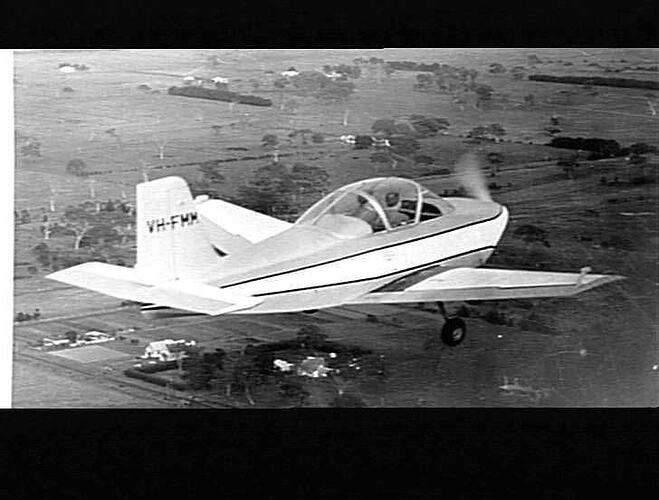The original Airtourer design was developed by H.K. (Henry) Millicer, G.D. Bennett and J.M. Tutty in 1952 as an entry in a competition run by the Royal Aero Club (UK), seeking designs for low-cost aircraft suitable for use by aero clubs in three categories: 1) two-seat light touring aircraft; 2) single-seat racing aircraft; and 3) single-seat aerobatic aircraft. The first prototype was built by the Air Tourer Group within the Victorian Division of the Ultra Light Aircraft Association of Australia at the premises of Perfectus Airscrews at 175 Mason Street, Newport, Melbourne. It used components supplied by Perfectus, the Commonwealth Aircraft Corporation (C.A.C.), Government Aircraft Factories (G.A.F.) and East-West Airlines, at a cost of about £4,500. Final assembly took place in a garage at Williamstown in January 1959.
The prototype was first test flown on 30 March 1959 at Moorabbin Airport, Victoria, under civilian registration VH-FMM, by RAAF pilot Flight Lieutenant Randall Green. A payment of £1,000 towards the development costs were provided by the Aero Club Federation of Australia as the type was seen as a potential club trainer. East-West Airlines were initially interested in manufacturing the aircraft but did not follow through on the proposal. The design was later further developed into the all-metal Victa Airtourer, with 169 aircraft being produced commercially at Bankstown, NSW by the Victa Aviation Division of Victa Consolidated Industries Ltd (manufacturers of the Victa lawn mower) between 1961 and 1966, making it one of Australia's most successful civilian aircraft designs. International manufacturing rights to the Airtourer were subsequently purchased by Aero Engine Services Ltd (AESL) of New Zealand who continued to manufacture and market the aircraft with considerable success until 1980. Ironically, one of their largest orders came from the Royal Australian Air Force (RAAF), which purchased fifty-one CT4A Airtrainers, based on the Aircruiser (an up-rated four-seat version of the Airtourer) between 1975 and 1982. They remained in service as the RAAF's basic trainer with No. 1 Flying Training School at Point Cook in Victoria until 1993. CT4B versions are still used by the privately operated BAe College at Tamworth, NSW to train ADF pilots.
More Information
-
Keywords
-
Localities
-
Authors
-
Article types

